QuestionI have a purebred female lionhead rabbit named Gwen. She is a pointed white and is almost a year. She is not spayed, and has had one litter. I have her in a cage outdoors with a solid bottom. I have 5 rabbits as of right now, but I had 6 earlier today(i sold one). They are all in different cages. I noticed 2 days ago that Gwen was missing a large patch on fur on her leg. Her fur on her bottom, hind legs, and tail have always been stained yellow with pee, but I never thought anything of it. 2 days ago I gave her a bath to try to remove some of the pee, this was when I notcied the missing fur. The fur pulls out very easily. I was thinking it could possibly be urine burn. What do you think?
Answer**************
Hi Hannah:
I understand there was a 'glitch' in my last answer; a mix up between two questions - so here is a revision.
How old is Gwen's litter? Are her kits still young, or did she have them a while ago?
I ask because its totally natural for the hair on the abdomen and hind legs to come out easily when a doe kindles (gives birth). It allows for the doe to pull the fur effortlessly to make a nest for the kits.
Has she had any interaction with a buck in the last 3 weeks? Even a minute of unsupervised play time? If so, she could be pregnant again. Bucks can be fertile as early as 8 weeks of age and its not uncommon for does to become impregnated by their own son if the kits are not weaned early enough. If she's had any access to an 8 week or older buck - she may be pregnant. If she has been with a male, can you palpate her to check for kits?
If her litter is older and she has not had any access to a male, then urine scald is likely the cause.
Urine scald is the term to describe early stages of hutch burn. It happens easily to rabbits that live in solid floor cages. They lay on their urine and the acidic environment of the urine eats away at their skin causing the fur to loosen and eventually fall out. In later stages, the area would be totally bare, bright red and can then develop open sores and blisters. That's full blown hutch burn and it can get quite nasty.
If you are certain this issue is not pregnancy related and the area is only bare but hasn't turned red or blistered yet - then the only treatment is to move her to a wire bottomed cage so she has no further contact with urine. Her hair will fill back in rather quickly.
Here's some information on wire floors:
~~~~~~~~~~~~~~~~~~~~~~~~~~~~~~~~~~~~~~~~~~~~~~
Why wire floored rabbit cages are best
Wire floors allow a more normal foot position than solid floors. Solid floors force a rabbit to walk on their heels instead of flat on the surface of the foot, because solid floors do not allow the nails to sink into the surface the way the ground does.
Wire floors are easier to clean and sanitize.
It's easier to minimize a rabbit's contact with manure (although it's still not possible to completely, absolutely prevent all contact with any manure, ever) with wire floors.
But, even more than the manure issue, wire floors minimize contact with urine. As we all know, urine is far more likely to cause scalding and skin injuries than manure, not to mention that urine is the transmission route for e. cuniculi (Encephalitozoon cuniculi).
Wire cages allow ammonia to escape better and increase air flow compared to most other types of cages.
Because of that increased airflow, wire floors are much cooler in hot weather.
Wire cages minimize growth of bacteria and harboring of pests like mites.
There are also a number of studies where rabbits were given a choice between being on wire floors and on other types of flooring such as deep litter, and chose the wire floors either more often or just as frequently as other flooring types.
Wire cages are also shown to be superior as far as rabbit health and growth rates in a number of studies.
Wire floors also do not cause sore hocks or other foot problems as long as appropriate gauge and smoothness of wire is used. There is lots of anecdotal evidence that rabbits bred for appropriate fur and anatomical characteristics, kept on 14-gauge wire do not develop sore hocks (unless it's genetically passed on), while rabbits kept on carpet, wood or other solid surfaces have a higher incident rate of sore hocks.
~~~~~~~~~~~~~~~~~~~~~~~~~~~~~~~~~~~~~~~~~~~~~~~
Hope this information is helpful. If you have any further questions, please follow up.
Lisa L.

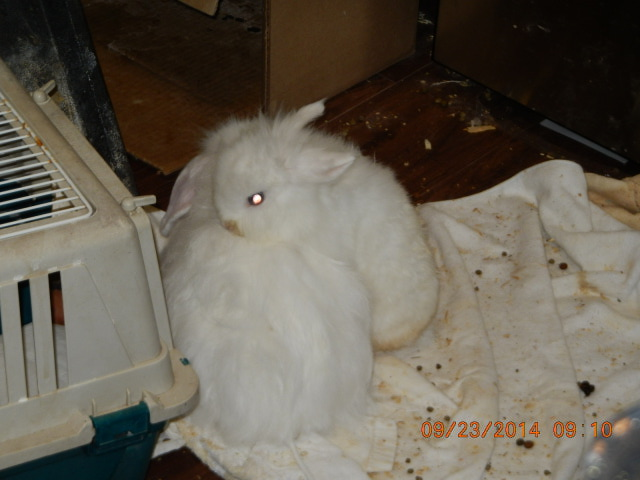 resting position
Question
2 rabbits
The dwarf often rests on the
resting position
Question
2 rabbits
The dwarf often rests on the
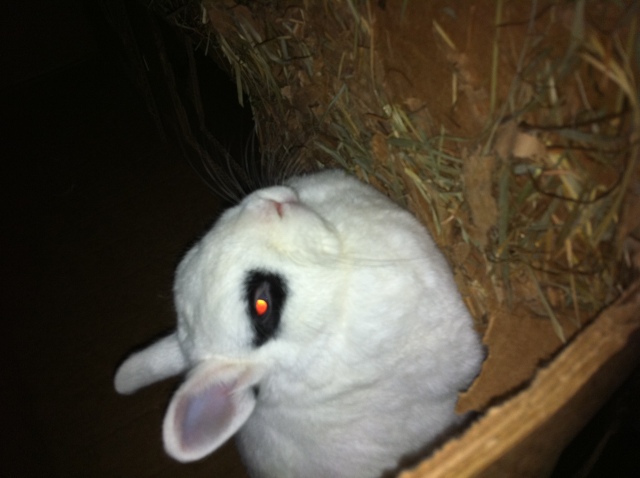 recently loss of a mate
Question
Bandit by himself
My bunny Nibbles pass
recently loss of a mate
Question
Bandit by himself
My bunny Nibbles pass
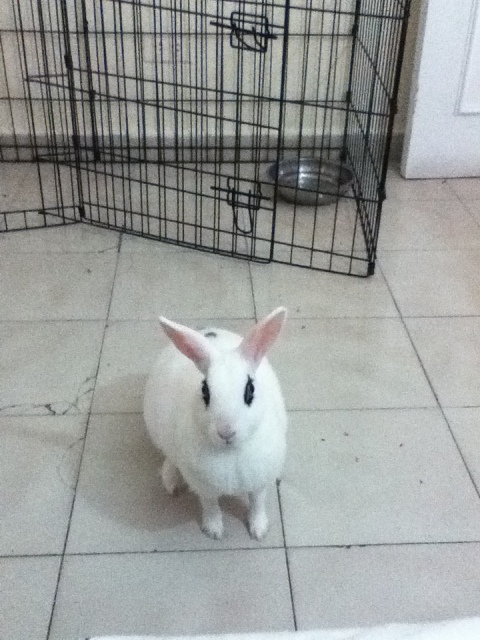 GI Statis ?
Question
COOKIE
Female/age 3yrs/house rabbit/open cage
GI Statis ?
Question
COOKIE
Female/age 3yrs/house rabbit/open cage
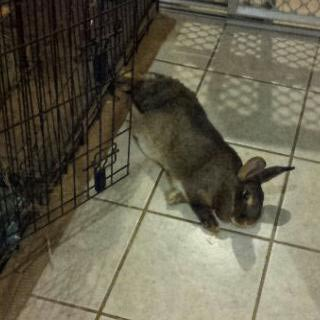 Cancer
Question
kaibi
Hello,
I have a 10 year old rabb
Cancer
Question
kaibi
Hello,
I have a 10 year old rabb
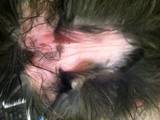 bunny going bald
Question
Bald bunny
This is my first venture int
bunny going bald
Question
Bald bunny
This is my first venture int